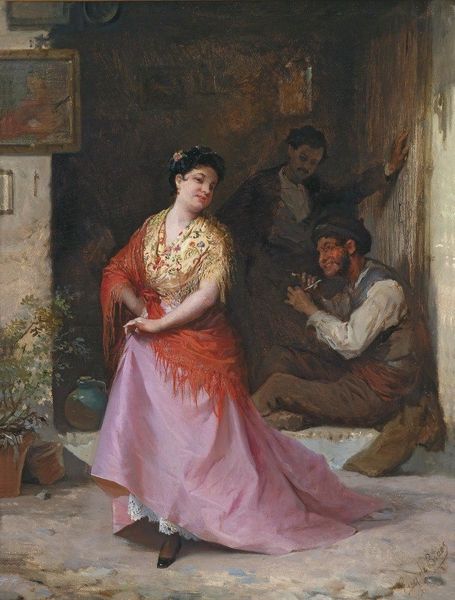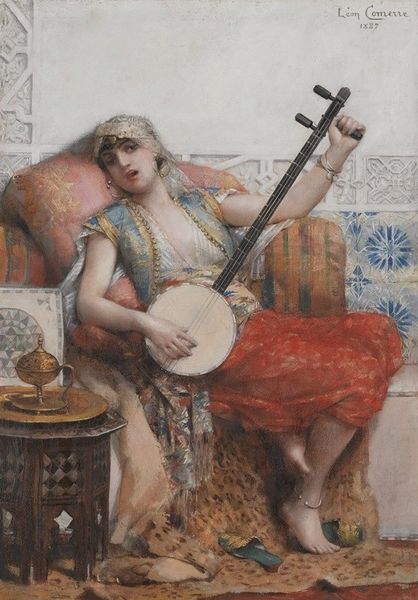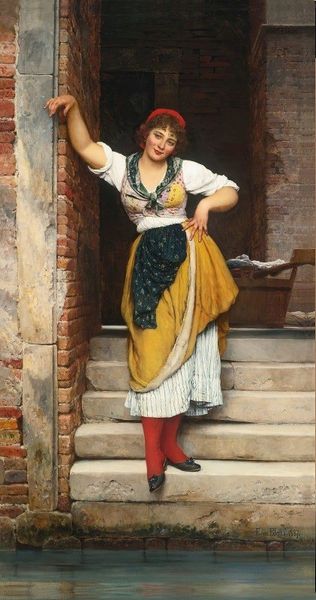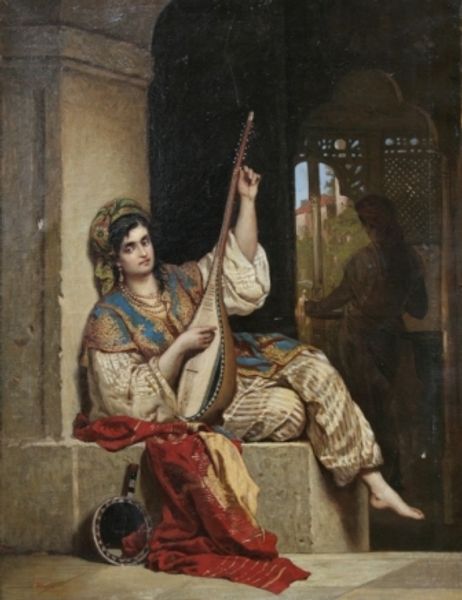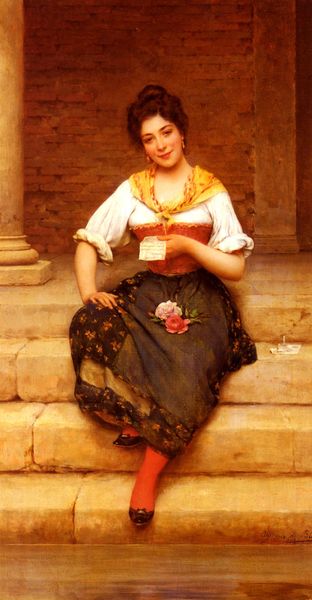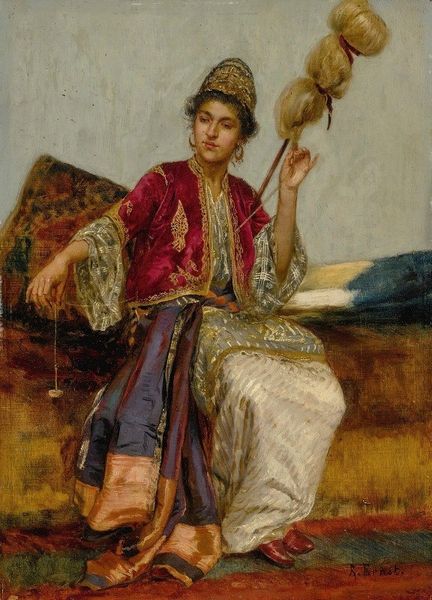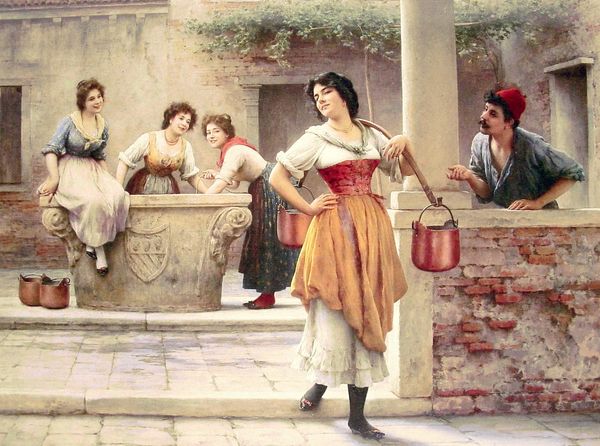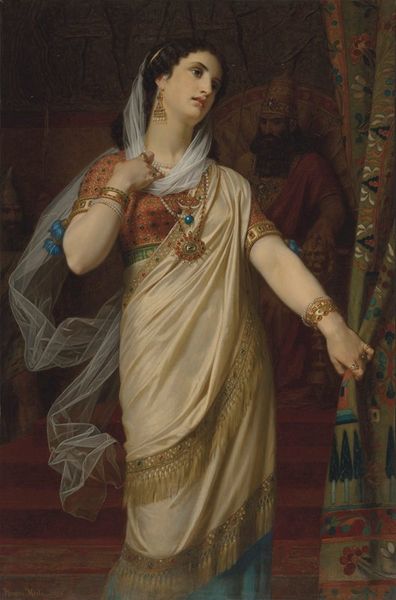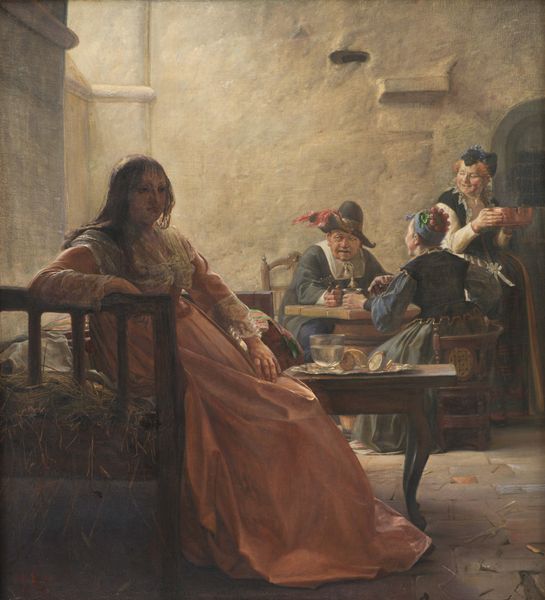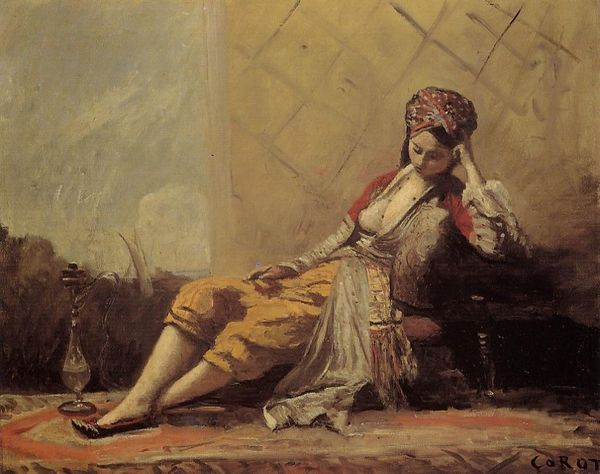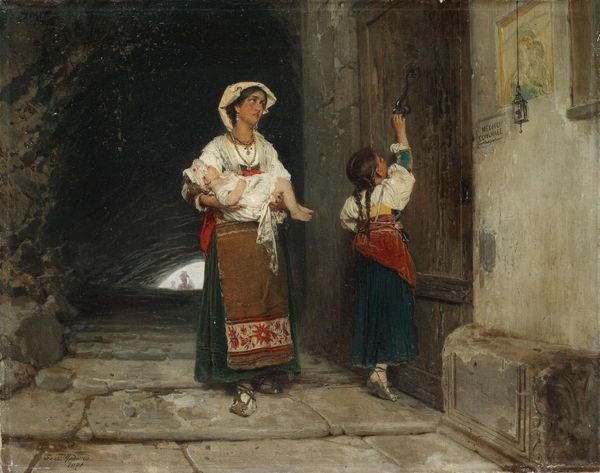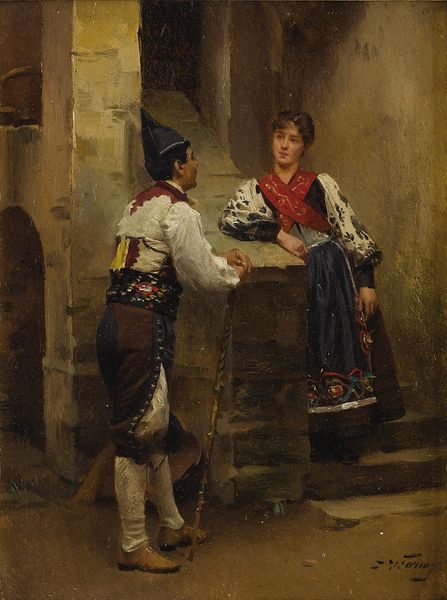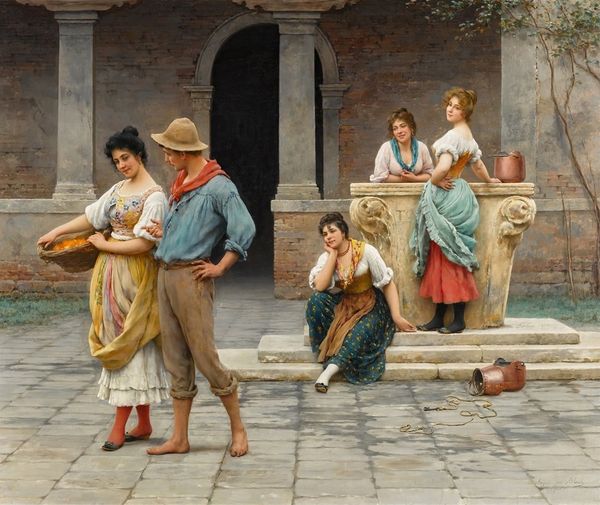
Copyright: Public Domain: Artvee
Eugen von Blaas painted "Die Wasserträgerin" in the late 19th century, a period when European art frequently romanticized rural life. Here, two women are depicted at a well, engaged in the daily task of fetching water. However, the painting presents an idealized view of labor. The women are attractively dressed, and the scene is imbued with a sense of leisure rather than the hardship typically associated with manual work. This romanticized portrayal aligns with the conservative artistic trends of the time, which often overlooked the harsh realities faced by the working class. To fully understand this artwork, we need to consider its original context. By examining art journals, exhibition reviews, and social histories, we can uncover the cultural values and artistic conventions that shaped its creation and reception. The meaning of this painting isn’t simply found on the canvas, but in the broader social landscape in which it was produced.
Comments
No comments
Be the first to comment and join the conversation on the ultimate creative platform.

